 | |||
|
| Home > Astronomy > AutoFib2 > Pipeline |
 | |||
|
| Home > Astronomy > AutoFib2 > Pipeline |
AF2 pipelineA new reduction pipeline for AF2/WYFFOS (AutoFib2/Wide Field Fibre Optical Spectrograph) is currently under development (the estimated time of release is October 1st, 2011). This software, written in IDL and soon publicly available, is able to perform full data reduction (including fibre to fibre sensitivity corrections and optimal extraction of the individual spectra) for a broad range of observing strategies. A quick-look version of the pipeline will also be available for carrying out real-time, preliminary reductions at the telescope while carrying out observations. This package is designed to be readily extensible to other fibre-fed spectrographs. These are its main features:1. Graphical User Interface (GUI)
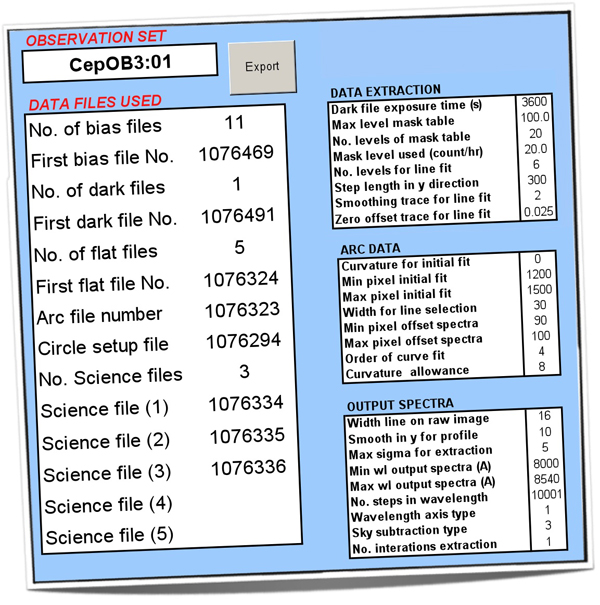
(Picture: Development version of the Graphical User Interface)
2. Automated data reduction
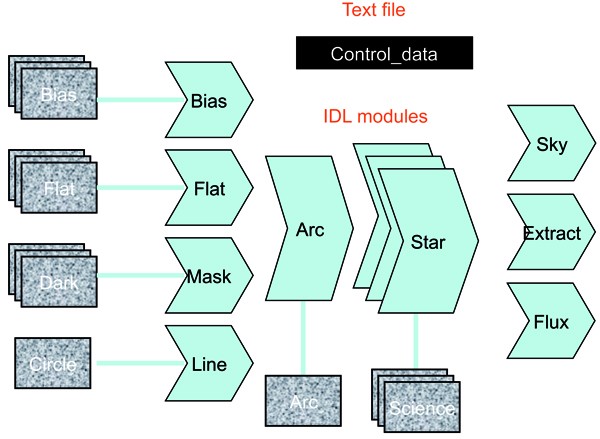
(Picture: Diagram showing the process of the data reduction pipeline)
3. Extraction of spectra
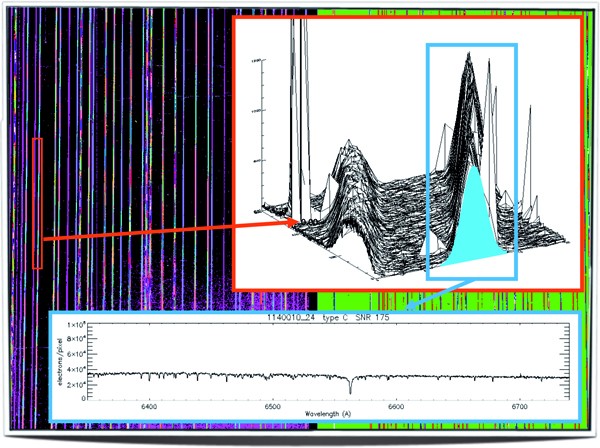
(Picture: Each individual spectrum is extracted using the optimal extraction algorithm)
4. Wavelength calibration
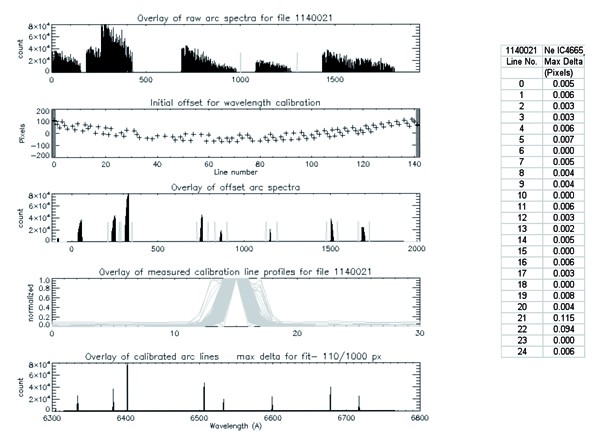
(Picture: Development version of the wavelength calibration procedure)
5. Sky subtraction
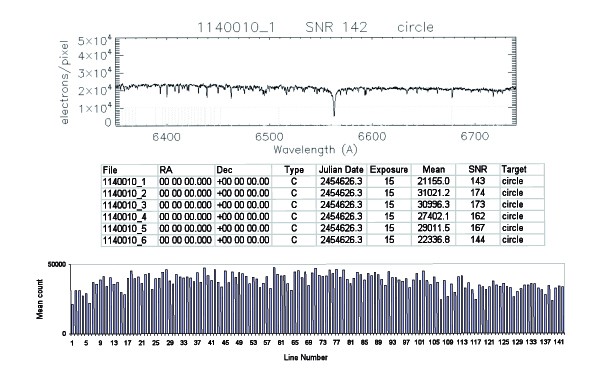
(Picture: Twilight sky flat giving the relative fibre-to-fibre sensitivity)
6. Output files

(Picture: An example of the combined final spectrum (bottom) of a F star in the χ Per open cluster)
|
| Top | Back |
|